Planetary Radio • Jul 24, 2019
Ready to Sail! LightSail 2 Deploys its Silvery Wings
On This Episode

Bruce Betts
Chief Scientist / LightSail Program Manager for The Planetary Society
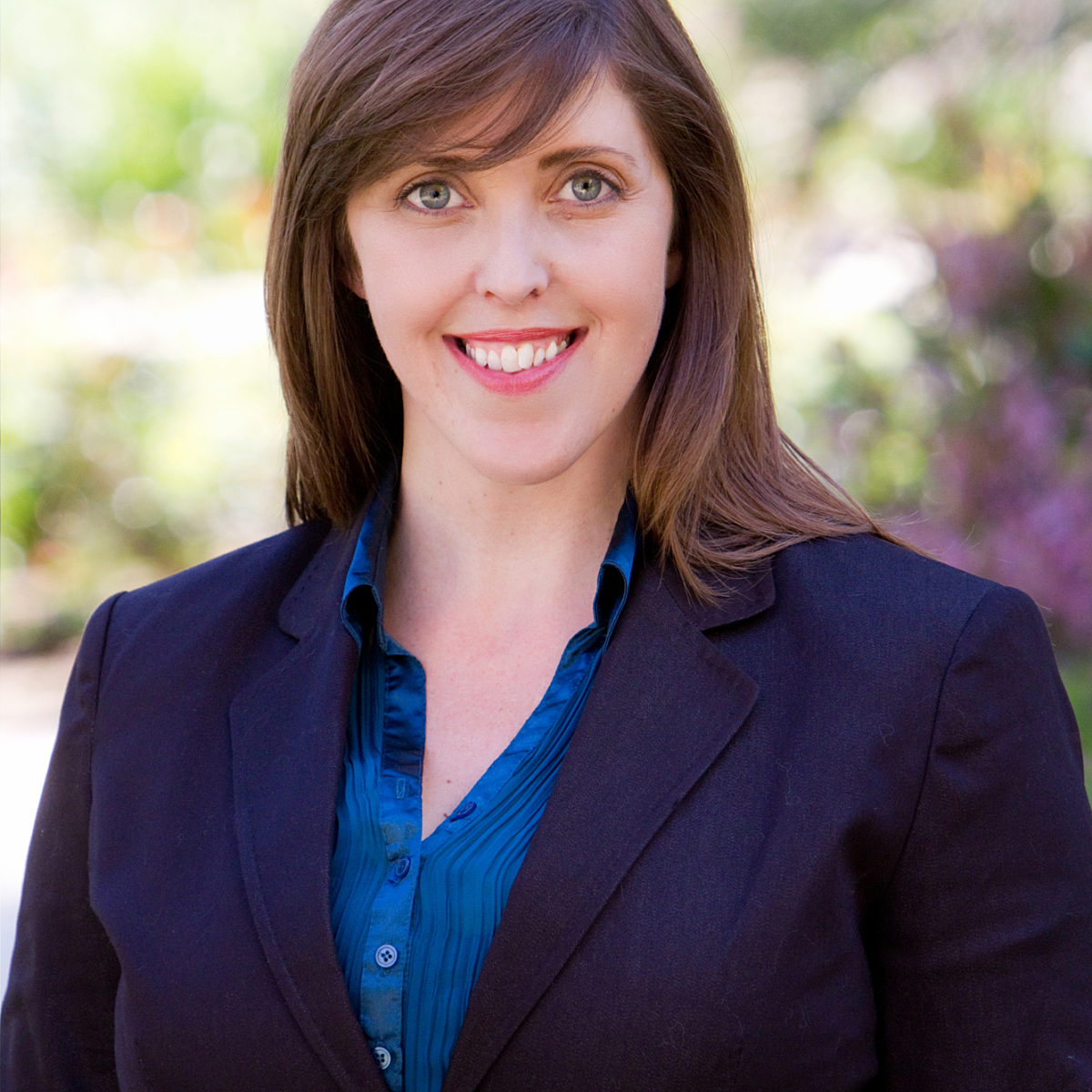
Jennifer Vaughn
Chief Operating Officer for The Planetary Society

Bill Nye
Chief Executive Officer for The Planetary Society
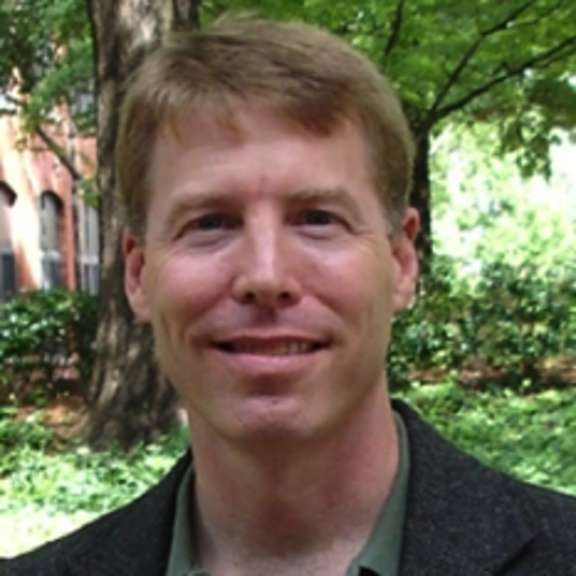
David Spencer
LightSail project manager and Mission System Manager for Mars Sample Return Campaign, NASA/JPL.
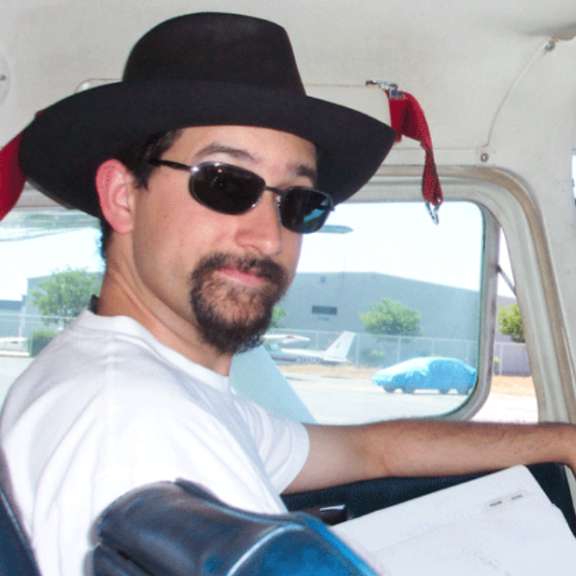
John Bellardo
Director of the Polysat Lab, Cal Poly San Luis Obispo
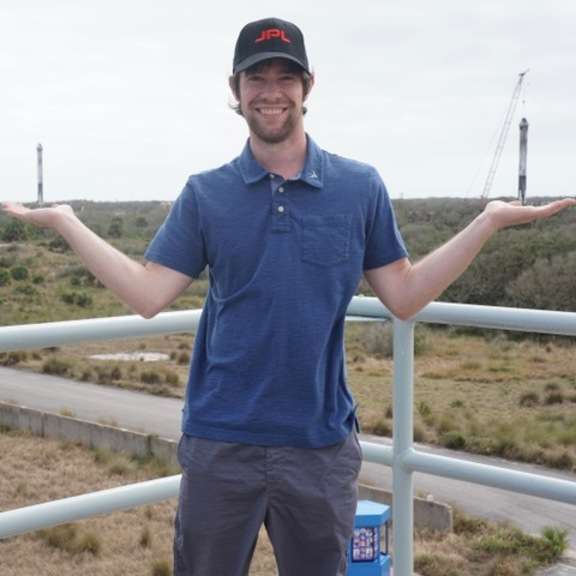
Justin Foley
Mars 2020 Rover Testbed Engineer for Jet Propulsion Lab
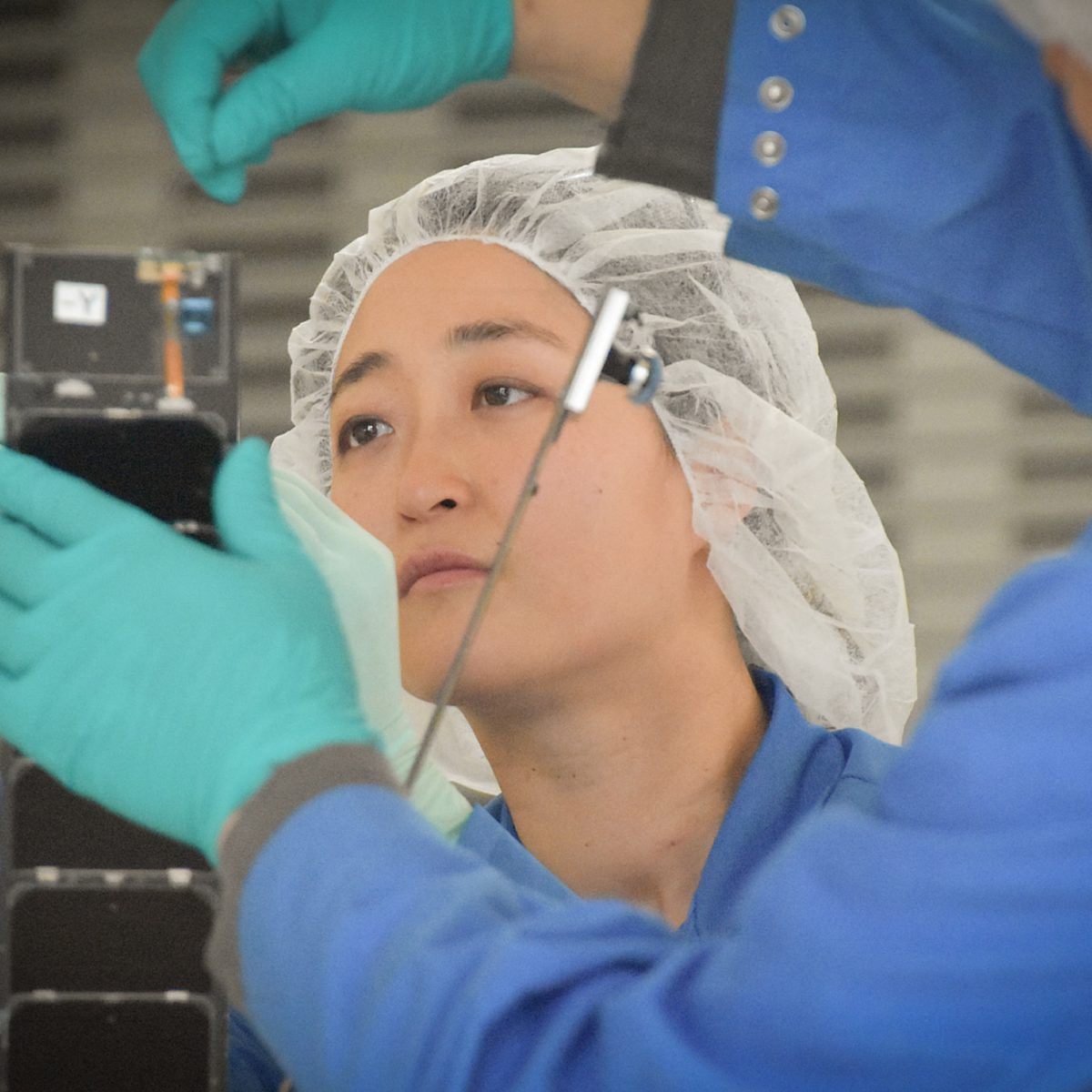
Stephanie Wong
Mechanical Integration Engineer for Ecliptic Enterprises Corporation
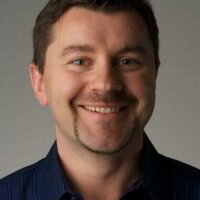
Kris Zacny
Vice President and Director of Exploration Technology for Honeybee Robotics

Mat Kaplan
Senior Communications Adviser and former Host of Planetary Radio for The Planetary Society
Join us as the little cubesat successfully unfurls its solar sail! You’ll hear from members of the LightSail 2 mission team on the morning of July 23, 2019, when the critical command was sent to the spacecraft. Then we’ll congratulate Kris Zacny of Honeybee Robotics on the selection by NASA of the radically-simple PlanetVac sample collection system for a trip to the Moon.
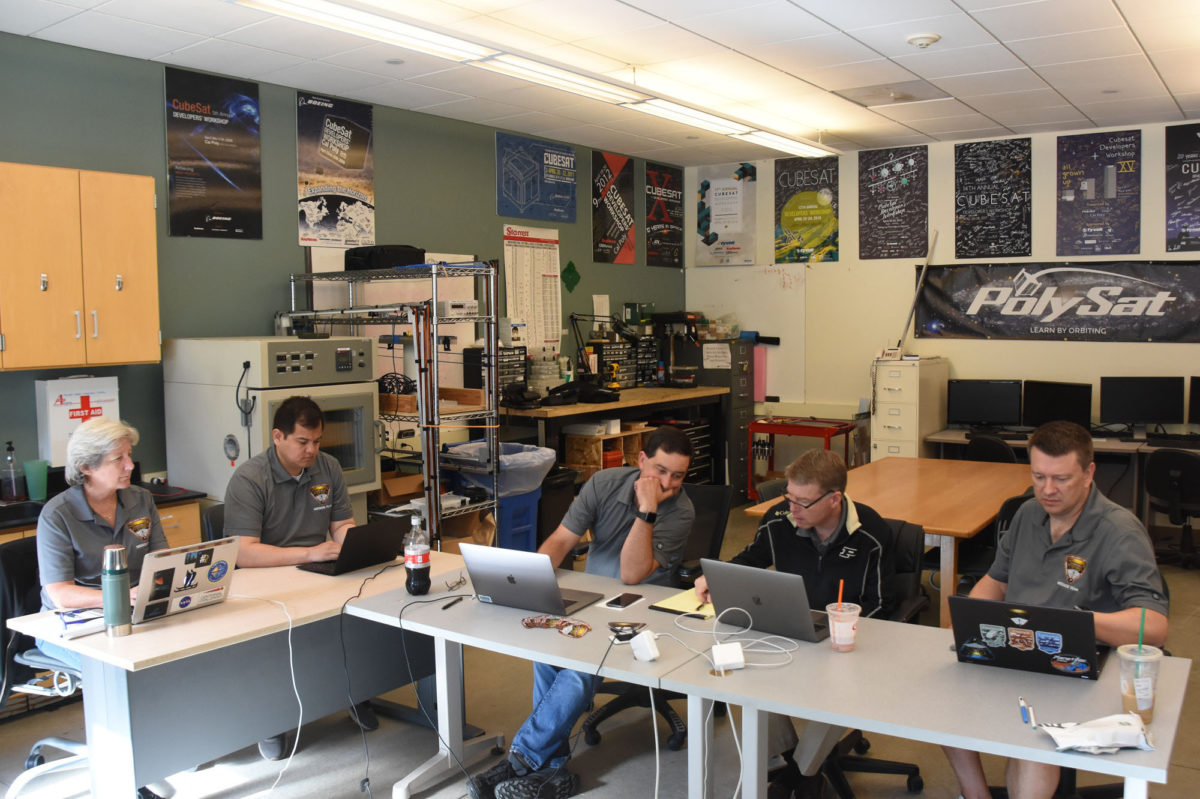
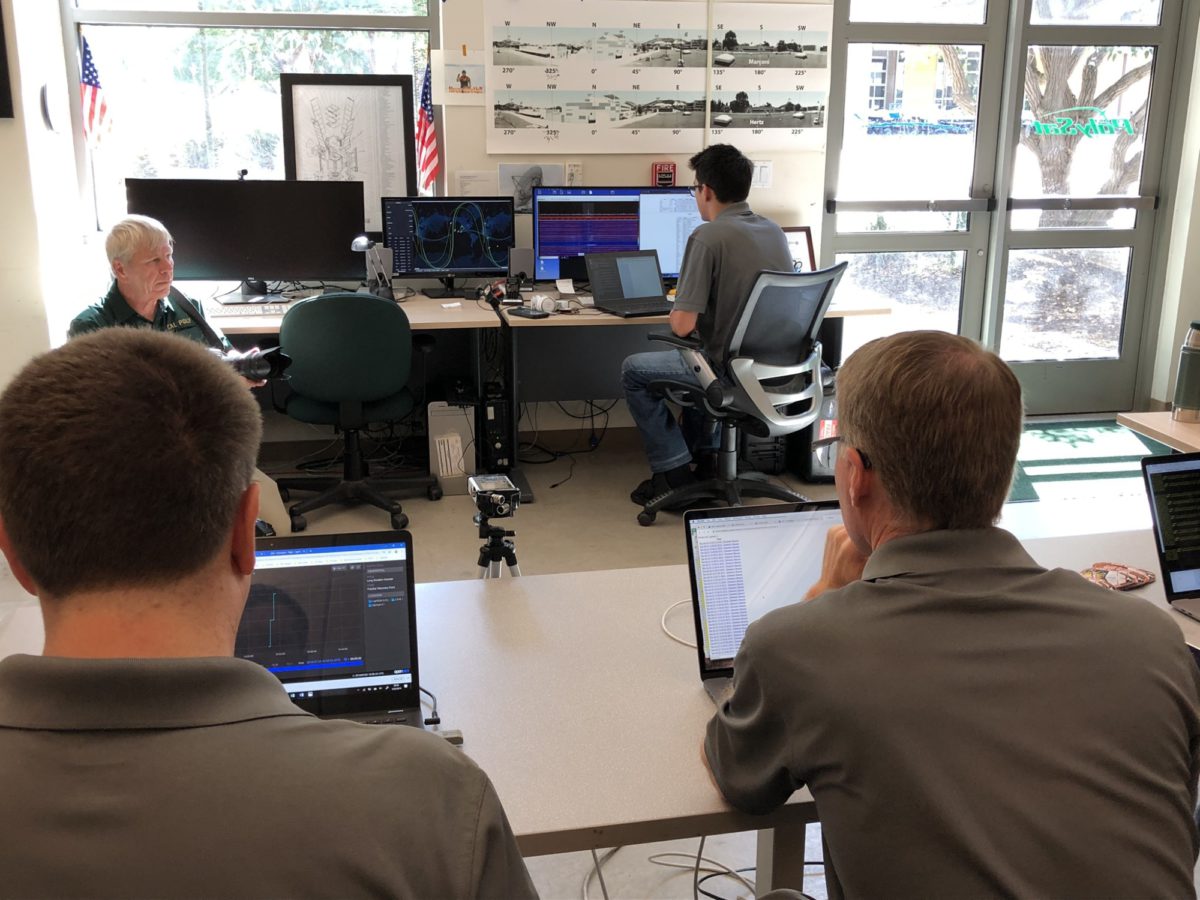
- The LightSail 2 Mission
- Enter the LightSail Sweepstakes!
- PlanetVac: Planetary Society-funded Technology Picked by NASA for Possible Moon Flight
This week's prizes:
A 200-point iTelescope.net astronomy account and a Planetary Society KickAsteroid rubber asteroid.
This week's question:
What is the lowermost element in the LightSail 2 logo (seen on the patch, sticker and elsewhere) that is not just a line?
To submit your answer:
Complete the contest entry form at http://planetary.org/radiocontest or write to us at [email protected] no later than Wednesday, July 31st at 8am Pacific Time. Be sure to include your name and mailing address.
Last week's question:
Before being named Eagle and Columbia, what were the Apollo 11 Lunar Module and Command Module named?
Answer:
The answer will be revealed next week.
Question from the June 27 space trivia contest:
With regard to spacecraft, what does ADCS stand for?
Answer:
ADSC stands for Attitude Determination and Control System.
Transcript
NOTE: This automated transcript is being edited by a human. Check back soon.
[00:00:00] A hundred and thirty-five thousand seven hundred eighty-six employment. Alright lightsail spreads its wings this week on planetary radio.
[00:00:18] Welcome. I'm at Kaplan of the planetary Society with more of the Human Adventure across our solar system and beyond and that was the moment we learned that light sail to had successfully deployed. Its solar sail. I was there in the. Operation Center at Cal Poly San Luis Obispo as the team celebrated the moment.
[00:00:41] I rushed down the California coast soon after so that I could share it and more with you stay tuned later for a brief check in with honeybee robotics. Chris acne. Chris will tell us about the selection by NASA of Planet vac for a trip to the moon. But first it's late morning [00:01:00] on July 23rd. We're in the Cal Poly School of Engineering specifically the home of police at the cubesat research lab run by John bilardo.
[00:01:11] John is one of the six Mission controllers sitting at laptops displaying every intricate detail regarding lightsail to to John's left his project manager Dave Spencer and next two days. Is the light sale program manager Bruce Betts? Good morning, Bruce. Good morning, man set the scene here. Tell us tell us about what's going on.
[00:01:33] We're in the police at Lab at Cal Poly San Luis Obispo getting ready for sale deployment of light sail to so we've got the core mission team here sitting at tables waiting for time to pass while we do some analysis of the last pass and that just happened moments before we started to speak what happened during.
[00:01:53] Pass we were able to upload a new orbital information file so-called [00:02:00] tle so the spacecraft more accurately knows where it is then given time and then make some slight tweaks to the attitude determination and control system in anticipation of being in solar sailing modes. And there was the answer to this week's trivia question, but we'll get back to that.
[00:02:17] It looks like maybe six people sitting in front of laptops that are running this Mission. That's exactly what's going on. We've got Dave Spencer the project manager and John bilardo the from Cal Poly who is managing the Uplink downlink and all the software on the spacecraft Alex Diaz from an ecliptic Enterprises doing electrical mechanical.
[00:02:39] Things and Barbara plant from Boreal space to an attitude determination control system work and then Michael Fernandez a student from Cal Poly who's watching monitors and helping us track everything and me and then we've got other people who are not actively involved in the operations, but have been key to the [00:03:00] history and success and development and testing and one small child who's playing with her Disney princesses.
[00:03:07] Yeah, I did. We add her to the team talk about what's going on up here and the display that we saw that waterfall so-called display now waterfall display is pretty colors and basically it. Plot the intensity versus the radio frequency map radio frequency. And so we are looking for the appropriate frequency for light sail and then we see increases in brightness when lightsail transmits and we receive a beacon from light sail or it's Morse code continuous wave signal you saw this big kind of a bell curve jump up centered in the middle of the screen because that was the center of the.
[00:03:53] See that you're transmitting honored light sales transmitting on. Yeah, and that would have been showing the current time. And then what it does [00:04:00] is it rolls that down over time? So you're kind of you're seeing the last few seconds last minute and then transmits down. Not transmits moves down the waterfall plot, and you can also see the transmission from Cal Poly up to the spacecraft is of course a much stronger signal hearing red in the color coding that done.
[00:04:23] How are we looking for less than an hour and a quarter from now for deployment of the sale. You Look Marvelous, how's the spacecraft looking but thank you. Oh, okay. It's looking good. We accomplished what we wanted to on the last pass and so nominally will deploy but we'll go through a go/no-go check after people have looked at the data from the last pass to make sure that we really are ready and planning on doing it and then.
[00:04:51] Take in data, very rapidly a smaller set of data at the beginning of the past and then make the final decision to deploy how soon [00:05:00] after the deploy command is sent. Will we have some evidence or do you hope will have some evidence that it's actually happening could be very rapidly within seconds or minute if it depends on when it gets in and whether we continue to receive the beacon information, but the key thing will be looking for is the motor count.
[00:05:20] So the motor that rotates to unfurl the Booms that pull the sales out that count should go up and it should go up fast and within the lat. All right, go lights out. Go I tell to Jennifer Vaughn is also in the Operation Center. She is the Chief Operating Officer of the planetary Society Jennifer. I was going to say big moment.
[00:05:42] But really this is the biggest moment. Well, it's close to the biggest moment. So it's the big moment that precedes the other big moments because it's a reminder. What we're trying to do here is proof solar sailing in Earth orbit. You can't do that without a sail. So the very first thing we have to do today is make [00:06:00] sure the sale gets out.
[00:06:01] Gets out correctly. It's that it's all the way out and that we're ready to actually start solar sailing and watching the orbit race. I don't know if you feel the same way I do but I bet you do just being in this room and watching this team do what it does to control the spacecraft and everything going well.
[00:06:21] I've been so impressed. So I've been lucky enough to be lurking on the phone with this team since we first started hearing from the spacecraft, but today's my first day actually in the room with them. So on one hand, I feel like I've been along for the ride, but it's nothing like being here in person seeing them work seeing them work out these issues and real time watching the data come in helping to analyze what they're seeing is very.
[00:06:48] And this is something that I've covered with you and with others before but just talk. What led to this day decades led to this day and tremendous Vision led to this [00:07:00] day. So it all started with our Founders being very interested in this topic. So Carl Bruce and Lou all had deep interest and investment in seeing solar sailing become a reality that led us to an opportunity to dip our own toes in the water with Cosmos one.
[00:07:20] That was our first project that was. Many years ago we started working on that as a way for the planetary Society to actively Advanced the concept of solar sailing and then after failure of Cosmos one, we went back to our members and said, what should we do now? Do you want to try again member said absolutely get going try it again.
[00:07:41] And that led to the concept of light sail, which is a very Innovative design of taking solar sailing which is robust propulsion. And marrying it with a very small off-the-shelf spacecraft with the cubesat. And so with this demonstration of we're not only testing solar sailing [00:08:00] in Earth orbit and controlling that sale and Earth in Earth orbit, but we're also looking at a combination of higher Tech propulsion type of small cubes ads and that might open up access for more players in space.
[00:08:15] And that really is the core of the dream right? I mean, I know not only to solar sailing or light sailing present this opportunity to reach places around our solar system, but. Perhaps Beyond. Yeah. Well, there's the the launcher and dream. Yeah for those who are really want to dream dream big.
[00:08:36] This is solar sailing is the only known method for one day reaching the Stars. So obviously it would be with the sun anymore. It would be with other forms of light propelling a sale over these long distances, but this is the early early stages of this technology design the planter studies on the front Leading Edge of this.
[00:08:58] And we hope that the the [00:09:00] successors will take this technology develop it and one day. Bring us to that point where we can explore beyond our own solar system. And why has the planetary Society embraced this project put so many resources into it made it. So Central to what we do. Well, it's our members and supporters.
[00:09:19] So the members and the backers were the ones who really embraced it. So, of course the organization Embraces. Well, we wouldn't have brought it to the public if we didn't see the promise, but it's really the public that jumped in and saw the promise and the ability to do something themselves. So it is our it's our planter study members and our Kickstarter backers who are realizing I can do something myself to help this happen.
[00:09:44] And here it is. It's happening the it's because of them that they did it. I'm gonna glanced at my watch. Let's see just over a half hour to go no-go only about 45 minutes until we find out if those sales are going to [00:10:00] deploy and start sailing on the light of the sun. It's happening now. Items, I'm so excited.
[00:10:06] Of course, there's always a little bit of nervousness with these moments, but it's also coupled with hey, if it doesn't work the first time there's ways to to try again. So we'll have other passes that we can work with but here's hoping that everything works the first time out. I'm excited. We got a great team here.
[00:10:26] So very excited for their work very proud of what they've done go light sail to go lights out, too. What you're about to hear is what happened over the next few minutes. I've heavily compressed these events that actually stretched out over more than 40 minutes. It begins with a tradition that dates back to the earliest days of the Space Age with Dave Spencer polling the mission team making sure everything is go.
[00:10:52] Okay. This is our go no-go for sale deployment and we're making the go/no-go determination based on the most recent tracking station. [00:11:00] Start off the ground systems and systems are go copy flight mechanics copy adcs systems systems go copy camera camera is go. Okay program manager for go for cell phone It Go.
[00:11:20] Now we wait for light rail to to appear above the Horizon so that we can communicate with it while we hope there will soon be images and possibly even video of the sale deployment. These will not be available live as it happens. In fact as I record this downloaded the images has been delayed. But the team will know that deployment has begun because Telemetry from the spacecraft will tell us that a tiny motor has started spinning.
[00:11:49] It's this motor that will pull the big sections of sale from the bread loaf sized cubesat each revolution of the motor is counted and each Revolution will bring [00:12:00] us closer to full success. Okay, just so you guys know we're going to be rising over Cal Poly here in about three minutes. The Cal Poly tracking passes about 13 minutes long, then we'll be going over Purdue and Georgia Tech simultaneously will switch over transmission from from Cal Poly to the Purdue tracking station terms of commanding at that point Vector angle looks good six degrees.
[00:12:32] All right, but in 35,000 counts to go. Cameras, Lots remaining or decreasing so cameras are being take pictures are being taken. Excellent motor count 36,000. 498. 41,500 Target dies a hundred thirty-five Thousand Seven. 2846 k. 51k [00:13:00] 57k. Failed appointment not only takes two and a half minutes. 68k motor position 80,000.
[00:13:11] 86,000. a hundred and a thousand. a hundred and thirty-five thousand seven hundred eighty six employment. All
[00:13:31] right, 123 p.m. Pacific time and it's good. We got a sale out. We got a space crack. Yeah, I'm happy
[00:14:04] [00:14:00] to let sale to sell deployment is complete. We command and sale deployment a few minutes into the Cal Poly pass over the tracking. We initially armed the sale. We waited a couple of minutes to make sure that everything look good in Telemetry and also to allow the sun geometry to improve for our Imaging during sale deployment.
[00:14:26] We commanded the sale deployment saw the motor counts begin to increment and over the next two and a half minutes. They are committed out to the expected value and that's our indication that the solar sail was fully. So we also took a sequence of images throughout the cell deployment event and over the next tracking station pass will hopefully begin to downloading some of the image thumbnails from that.
[00:14:50] Those are highly compressed images that will give us an idea of what we captured during the image sequence. Also next past the goal is to transition into what we [00:15:00] call mode 2, which is solar sailing mode where we Orient the solar sail Edge on to the sun when we're moving towards the. Face on when we're moving away from the Sun and that allows us to increase the orbital energy over time, which is the objective of the mission.
[00:15:14] That's where we are.
[00:15:19] All right. Thank you. Planetary Society CEO Bill Nye was unable to join us in person, but he was watching and listening with the rest of us via Skype and he knew when we'd achieved the goal of full deployment.
[00:15:43] Nicely done you guys. Congratulations to everyone. That is fantastic. All right, thank you all white sale supporters. This is just another just an enormous kilometer marker AKA milestone in the [00:16:00] light sale program. And so the sales are out. And so expect any moment. The photons are pushing the sales higher higher to a more distant.
[00:16:12] Apogee we're advancing space science exploration. Thanks to everybody there at Cal Poly and thanks to our supporters around the world who have been just been great. The last depends how you reckon the last four years the last nine years the last 42 years depends where you start counting, but this is a dream of our Founders who Friedman Bruce Murray and Carl.
[00:16:40] I've been a fan of solar sailing all this time, and I'm so I'm honored to be representing the organization at this historic moment. So thank you all so much. We are sailing right now feel the photons son being pushing his own
[00:17:00] [00:16:59] as we waited for the next pass and an attempt to download images. I asked three of the longest serving members of the lightsail team to join. Justin Foley and Stephanie Hwang started on the mission as Cal Poly students under lab director John de Lardo. Justin is now a testbed engineer for the 2020 Mars Rover coming together at the jet propulsion lab.
[00:17:23] Stephanie is a mechanical integration engineer at ecliptic Enterprises. Which is played an essential role in bringing light sail to its success. Stephanie was holding the youngest in person witness to sail deployment. You guys have got to be feeling pretty good John bilardo. Absolutely. We've been working for many years as a team to get to this moment and I'm personally very excited as a whole team is really excited.
[00:17:50] I'm also really excited. I feel lucky to be here right now since I had come up from from Los Angeles, but this is really fun. Especially having done lightsail one [00:18:00] specially, you know, sitting next to John doing the deployment again was was awesome watching as murder counts go up so excited right now.
[00:18:06] And you're the only person who brought a second generation for lightsail. Yeah. I'm relates L1. She was in my belly during operation. And then we did test deployments and she was just a tiny tiny baby. And now she's grown up to see a different world. We're going to come into so it's kind of cool to see her grow up just as lights those kind of grown up to John.
[00:18:29] Where are we now? What's what's happening? Everything is exactly as it should be nominal. Yeah. Absolutely. The spacecraft is nominal the attitude control. Is where we wanted the tumble mode right now. So it's taking out some of the rates that could have potentially been induced when we deployed.
[00:18:43] The sale red is the next pass. We're going to work on transitioning into solar silly mode. So that's sort of next up on the agenda. Does that mean that you'll start doing those 90 degree turns twice every orbit? Yep. That is what's going to happen starting next orbit. Assuming things [00:19:00] stay on schedule.
[00:19:01] So what is the orientation of the sale now at you know, Yes, we have data that will tell us where the sale is pointed. However, we're not trying to control it to be a particular orientation. What we're trying to do is make the spacecraft spin down. So instead of spending a few degrees a second.
[00:19:15] Hopefully we'll get it may be less than 2 or 1 degree per second on all the axes. That's what we're trying to do right now. I mean it is only the light of the sun even if you're not oriented correctly now, it's not like light sales going to be knocked out of its orbit. That's correct. The sun is not that strong.
[00:19:34] The solar cell effect is wonderful because you get propulsion continuously while you're in sunlight and that's really what builds up a lot of momentum and allows you to go sailing someplace for an Orbiter to you're not going to really accumulate enough to make a large difference one way or the other.
[00:19:49] I just want to congratulate the three of you. The rest of the team is sort of spread all around us here. It is a great moment. It's something they've been building to for so many years. [00:20:00] Congratulations. Thank you are special light sail to deployment coverage will continue with this week's special.
[00:20:11] What's up segment, but we first got another treat for you. Planet vac is going to the moon the brilliant little device that can replace a footpad on almost any Lander going anywhere with a solid surface has been given the go-ahead by NASA full disclosure that is well known to anyone who has listened to planetary radio for very long development of this small simple sample collection system has been championed and supported by the planetary Society for years when news.
[00:20:45] Found July first about its selection. I contacted old friend of the show Planet vac principal investigator Chris Zach knee at honeybee robotics where he also serves as vice president and director of exploration Technologies. [00:21:00] Chris acne congratulations on planet back being selected to be part of this great group of experiments and hardware and Landers that are that are headed for the moon.
[00:21:11] Hi, Matt. Yes, vis--vis has been absolutely fantastic news. I've been very ecstatic for the past just over a week since since this was announced. It's been a very very slow progress in terms of Technology because of different funding. Also with that if you remember we met at honeybee robotics back in 2013 or 2012 to discuss however, very first vacuum chamber demonstration of Planet vac.
[00:21:42] This has been a Tipping Point where we took the idea that was in a cad file and we turned it into reality and and everyone else got super excited about it and since van. We received additional funding and also planetary [00:22:00] Society was. Part of this. We actually flew Planet VAC on a master lender and then these two these two demonstrations one in the vacuum chamber and one on the Mast and essentially tip the scale folks realize that this technology actually can work and has potential to change Paradigm of space exploration.
[00:22:23] Most of a lenders to the moon or other planetary bodies require a. Most of his time the sample has to be acquired using these power-hungry large robotic arms large and slow robotic arms and complicated and very complicated. That's right. Very complex require very sophisticated software at the end.
[00:22:48] You have a scoop. So you you grabbing the sample with the scoop but to deliver a sample you rely on gravity. There is no other Force. That will move the [00:23:00] sample to the instrument you sense you're relying on a the gravity of planetary bodies and moon has only 16 Mars has one third. If you go to other planetary bodies, but has less the forces are significantly reduced.
[00:23:15] So if your sample is sticky, it's not going to flow. This has been on a mind of omission planners for a for a long time until the planet vacuum. And Planet vac does not rely on gravity. It relies on a force provided by gas and that's very very powerful force and only one moving part. I remember that 2013 vacuum chamber test and I will always remember that test in the Mojave on that dot the foot of that Master and Rocket as we stood behind big concrete blocks to protect us just in case that was so exciting wasn't there a NASA Representatives?
[00:23:56] Endeavour to at that test, that's correct though a belly [00:24:00] free NASA Representatives watching all the this particular technology and Reporting up the ranks to other NASA officials. So did received a lot of press outside of NASA and a lot of press within NASA so has been very very exciting. So I hope you guys won't mind that we planetary Society folks our members included.
[00:24:23] Of course, we also take some. In this because of that that support the encouragement that we were able to provide. Absolutely we wouldn't be here without the planetary society. And as I mentioned that initially, you know, we did a lot of Technology development with with NASA sbir program and whether technology and it was with some testing and some demonstrations in a reduced gravity flight the final CAD design.
[00:24:56] That showed how this technology could be implemented [00:25:00] on a future Mars or lunar Landers. And if you remember initially it was called Mars vac. It was designed for Martian sample return Mission, but we did say that it could work on a planetary body and the planetary Society brought additional funding to essentially turn this initial design.
[00:25:21] Into a prototype into a prototype and then the Prototype that could be that was tested in a vacuum chamber in the Mars vacuum chamber and to us and to many other folks developing technology. This was Yahoo moment when you realize how simple this stuff is, it's one thing, you know looking at the slides at the animations and things like that.
[00:25:44] But it's another thing when you actually see the end-to-end functional Hardware in a vacuum chamber showing all the elements of the Lander and the sample delivery. So that that was huge. Yeah. You know what Bill Nye says one test is worth a [00:26:00] thousand opinions. And yes, what's next? Do you know who's going to give Planet Vaca ride to the Moon?
[00:26:10] I've been getting a lot of emails. I've been getting a lot of emails because Planet vac essentially is an enabling technology for any instrument that requires a sample as you know, the easy stuff has been done. You can only do so much. By looking at the surface with non-contact instruments and taking pictures and and and so on you really really need the sample and various array of instruments that will not work unless they actually get a sample.
[00:26:44] If you do not have Planet vac. You'll have to figure out some other means of delivering a sample which we know is very complex and breathe. Book folks of I've been getting a lot of emails asking a bond where details of the plant vac but a lot of folks [00:27:00] are want to want to fly. Well, I'm not surprised that you getting this attention now best of luck to all of you folks at honeybee robotics the entire planet back team great group of people that you've pulled together there and again congratulations on this.
[00:27:15] Can't wait to see planet vac do its stuff on on the surface of Earth's moon. Thank you Matt. And thanks again to the planetary Society without you. You wouldn't be here. It's gonna be exciting to go together to the. That's Chris acne vice president and the director of exploration technology for honeybee robotics.
[00:27:37] You can take a look at their site. You can see our coverage at a planetary dot-org of plant it back as well. We'll put a whole bunch of links on this week's episode page episode of planetary radio. The one you're listening to right now at planetary dot org slash radio including. A link to the show in which we covered that test in the Mojave Desert of [00:28:00] Planet back on that Masten rocket Chris.
[00:28:02] Just one more question says here in your bio. You got your PhD from UC Berkeley in Mars Drilling. Is that right? Yes, that's right. This was my last ditch a trying to get to to space. I really wanted to work on the on the Aerospace or space missions. But my Mining and drilling backgrounds took me different directions and the last ditch at turning my career into into space was essentially doing something related to extraterrestrial Drilling and Mining.
[00:28:38] And if it was it, I love it worked out. Well doctors acne doctor of Mars drilling. It has been a pleasure to talk to you again and we'll be talking to you yet again. I'm I have no. Thank you. Matt's looking forward to it Chris Shakti of honeybee robotics the principal investigator for Planet vac time [00:29:00] for a very special.
[00:29:01] What's up on planetary radio? So we are joined by the chief scientist of the planetary Society who is sitting in the. Exact same chair that he was in as the program manager for lightsail to when lightsail deployed its sales. Congratulations. Thank you were excited and I just want to point out a did not steal the chair were still in the same room.
[00:29:26] This is operations. This is where the whole team was your neighbor here. You're our special guest on this. What's up introduce him. This is Dave Spencer professor at Purdue University and project manager for lightsail to good to see you again Dave. Congratulations. Thank you. It's an honor to be here.
[00:29:44] It's a huge day for us, you know, everything's gone great and we're really excited to have the sale deployed at this point and looking forward to solar sail. And so what we're waiting for now right are our pictures because we want our pictures. Well, I always want the pictures but we also want to get down [00:30:00] Telemetry data that tells us other engineering information.
[00:30:02] So we'll be working on both those things. More news about light sail to No Doubt next week tell us what's up in the night sky, well now light sail to it's been up there. But now it should be potentially brighter. You can go to the planetary Society website to the it sailed up planetary dot-org to the update page and see when the next passes for you, but it's going to be highly variable depending on whether your Edge on when you won't see it or whether you face on and then it may appear bright in the sky.
[00:30:33] So. Check it out. But if you want a sure thing go for Jupiter Jupiter Jupiter's dominating in the evening sky in the South and looking like a super bright star and over to its left is yellowish Saturn also looking bright but not nearly as bright. What if Jupiter's a John hmm. I think you'll still see the red spot.
[00:30:56] Is that how that works? Can we move on to this week in space [00:31:00] history you is 50 years ago that Apollo 11 return from the Moon and splash down with the astronauts who were first to walk on the moon Dave. We're ready for a little bit more of your special guest spot Bruce. How about a random space fact?
[00:31:16] Sure Dave. This is one that you and for other people know the answer to. The ending motor position of the light sail deployment motor that deployed the sale 135,000 786 nearly exactly what we were shooting for that's a number that will be etched in history. Exactly. Don't forget it one three five seven eight six.
[00:31:41] What are those called letters again? 1357860. Sorry. W9 XP doesn't matter nobody's listening to that station except for you guys in some shortwave guys. All right, let's let's keep going. Let's go to the contest. [00:32:00] All right last time we asked you something and I have no idea what it was. Let me help you asked people what does adcs stand for it's so light sell themed and we even have Barbara plant right over there ATC.
[00:32:16] Expert. Yeah, she's waving us off. That's that's showing attitude Barbara. She's speaking of determined attitude 80s. Yes. Yes. We asked what it stands for attitude determination and control system or they could have said software or sheep, but that would have been cheap would have been wrong.
[00:32:40] Here's how Dave Fairchild our Poet Laureate put it. If you are a satellite, there's things you need to know to help you decide on where you are. And where you need to go. Your attitude determination may be found. I hope with systems of control that might include. A gyroscope and indeed it does but here's [00:33:00] our winner for this week.
[00:33:01] It's Brian mccarville in South Beloit, Illinois who says goal. I'd sail congratulations Brian we have gone and we're still going and you have won yourself a 200 point. I telescope dotnet astronomy account. Hey planetary Society kick asteroid want to say it with me robber asteroid. Bruce Betts book astronomy for kids yay.
[00:33:29] We got some other stuff. Of course this from set upon in Glen Oaks New York, he wishes that adcs stood for aliens detection and capture system. Just hate to have to clarify everything in this political climate. He says do I need to clarify climate? I think they have one of those in Area 51 atcs.
[00:33:50] Here's somebody who's this speaking of attitude determination and control system. No Neil in Tokyo says wants to know if he can get one to help with his teenager. They [00:34:00] cost extra from Aaron Mindy go in New Smyrna Beach, Florida who listens to us on W. MF e sounds like a great start to a new relationship.
[00:34:11] Think about it attitude determination and control system that be a useful thing in relationships. It would I'm sure my wife wish I had one. Finally this from Joe Murray in Hoboken New Jersey. All of us have the same attitude go lightsail Joel. I'd sail it's going with a sale and everything. We're ready for a new contest following the light sail to theme in the logo for light sail to.
[00:34:41] What is the lowermost element in the logo? That's not just a just a line lowermost element in the logo. Go to planetary dot org slash radio contest to get us here. You have until Wednesday, July 31st at 8 a.m. Pacific [00:35:00] time to get us this answer. No cheating Dave. I saw you looking at that sticker right there.
[00:35:05] I couldn't resist. I took a quick look I know the answer, but I won't tell anyone. Thank you. Thank you very much. You have a chance to win. And bring anything special with us. So we'll just leave it at a 200 point. I telescope dotnet account this week that of course, I telescope is the worldwide network of remote remote operated telescopes that you can use to.
[00:35:27] Oh, I don't know if you're really really quick you might catch light sale. Although binoculars are probably a better idea and a planetary Society kick asteroid rubber asteroid and that'll be it for this week. All right, everybody go out there. Look up the night sky and think. Dave which they think about go lightsail goal.
[00:35:47] I'd sail thank you and good night. That's Bruce Betts the chief scientist for the planetary Society also the program manager for light sail to with Dave Spencer the project manager for lightsail [00:36:00] to and that's what's up. Many thanks to those of you who have given us a rating or review in iTunes or apple podcast planetary radio is produced by the planetary Society in Pasadena, California and is made possible by our spacefaring members Mary Liz vendors our associate producer Josh toil composed our theme which was arranged and performed by Peter Schlosser.
[00:36:23] I'm at Kaplan with a little gift for all of you who celebrated a certain 50th anniversary on July 20th. Here's a tribute from the amoeba. People called one giant leap, Ad Astra.
[00:36:46] July 16th 1969 on Saturn 5 rocket took off the [00:37:00] disguise it orbited Earth than looking for the moon Armstrong Aldrin and Collins. Ooh.
[00:37:19] Mankind in lunar orbit College control the Columbia waited for the 1214 Armstrong and Aldrin in the eagle defendant down to the surface as.
[00:37:57] Mankind.
[00:38:00] [00:38:14] Receiving transmission from the moon. Go ahead Neil Neil come in. I didn't quite get that. I couldn't make it out. What did he say? I believe he said that's one small Speck of him. One giant grease stain on my thigh. No, he says that's one mall cop and Stan one. Giant jeep that. Damn drives, it doesn't mean.
[00:38:46] that's one small step. One giant leap for mankind that makes a lot more sense actually quite profound. It's a poetic even maybe has a career in [00:39:00] radio. Well, he certainly has the faith for it.
[00:39:20] For mankind.


 Explore Worlds
Explore Worlds Find Life
Find Life Defend Earth
Defend Earth


